Japan
|
Dynastic Japan The chain of islands that make up modern Japan stretch from the Sea of Okhotsk in the north to the East China Sea in the south. Much of Japan faces what is now North Korea and South Korea, while the southernmost edge of the country's territory abuts that of modern China to the south-west. Four main islands make up the country, these being from north to south Hokkaido, Honshu (Honshū - the largest of all of them), Shikoku (the smallest), and Kyushu (Kyūshū). A further six thousand smaller islands are also included, although less than five hundred of these are occupied. Japan has emerged from a generally unified but rarely harmonious history of clan feuding and political intriguing that began as soon as its Early Cultures had reached any particular level of complexity. At various points that unity existed in name only, thanks to the continued presence of a divine emperor, while two or more major clans conducted what was little less than a Japanese civil war across the four main islands. It is the divine emperors who are chronicled here, someone whom their warring subjects rarely opposed but who were often little more than pawns themselves in the ongoing clan struggle for superiority. (Information by Peter Kessler, with additional information from the BBC series, The Story of China, by Michael Wood, first broadcast between 21 January and 25 February 2016, and from External Links: Japanese Archaeology, and Encyclopaedia Britannica.) |
||||||

|
||||||
|
Emperors of the Sun Line of Japan (Legendary Period)
Today there are around 127 million Japanese speakers worldwide, with a vocabulary that has been strongly influenced by Chinese during the fifteen hundred years between the legendary period and the modern day. It is an agglutinative language with a complex system of formalities that express the hierarchical relationships within Japanese society and the relative relationships between internal discussion partners. Japanese script is a mixture of Kanji - characters copied from Chinese - and Hiragana and Katakana, which are based on syllables. It is one of two languages in the Japanese Ryukyuan language family - the other being Ryukyuan, which is spoken on the Ryukyu Islands. Experts remain unsure about the origins of this language family. It shows links and similarities with other languages in many different areas, with many theories being expounded about its source, these including the following: Japanese is related to a now-extinct language which used to be spoken in Korea and Manchuria; Japanese is related to Korean; Japanese is one of the Altaic languages which followers of this theory also believe to include Mongolian, Tungusic, Turkic, and Korean; Japanese is a Creole language, possibly with Austronesian influences; Japanese is a purely Austronesian language; or Japanese is related to Tamil. All or any of these theories may contain elements of truth. (Information by Peter Kessler, with additional information from Records of the Three Kingdoms, Chen Shou (third century text which covers the period AD 184-220 and which combines individual histories of the three kingdoms), from the Kojiki (Records of Ancient Matters), from the Nihon shoki (Chronicles of Japan), and from External Links: Fasttranslator, and Japan-Guide.com, and Ancient History Encyclopaedia, and Early Jomon hamlet found (The Japan Times, 1997), and Three Kingdoms (Encyclopaedia Britannica, and New World Encyclopaedia).) |
||||||
|
AD 1st century |
Jimmu Tenno |
Tribal leader. Legendary founder of Japan. |
||||
|
AD 1st century |
Jimmu Tenno - the posthumous name for this legendary founder figure of Japanese culture and imperial rule - is given a date of birth of 660 BC and a date of death of 585 BC. Shintoism places him as a direct descendant of the sun goddess, Amaterasu, after she had sent her grandson to the Japanese islands to marry a local princess. Jimmu Tenno is the grandson of that princess and her husband.
|
|||||
|
However, his claimed arrival on Japan with his followers is in fact an eastwards migration from Takachiho, the southern part of Kyūshū (in modern-day Miyazaki prefecture) towards Naniwa (modern day Ōsaka). The migration is lead by Jimmu's brother as their former location is inappropriate for ruling over all of Japan. The brother is killed in battle and Jimmu completes the conquest by sailing around the islands and attacking Naniwa from the east (hence his 'arrival'). It would seem that Jimmu's clan is largely dominant but needs to defeat one or more other clans to be able to claim complete domination, much as the historical Yayoi period clans are in fact doing at this time in Japan. |
||||||
|
Suizei |
Son. Reigned 37 years. |
|||||
|
Annei |
Son. Reigned 38 years. |
|||||
|
Itoku |
Son. Reigned 33 years. |
|||||
|
Kōshō |
Son. Allegedly reigned 82 years. |
|||||
|
2nd century |
Kōan |
Son. Allegedly reigned 101 years. |
||||
|
by 100 |
A society has by now emerged in Yayoi period Japan which involves a class system. Around a hundred clans have formed which fight each other for dominance throughout the rest of the period. Despite this fighting, the clans also form alliances when necessary, creating small kingdoms for the purpose of ensuring military power or mutual economic success. The Chinese Han Shu history of AD 82 is one source for this information. |
|||||
|
Kōrei |
Son. Allegedly reigned 75 years. |
|||||
|
Kōgen |
Son. Allegedly reigned 56 years. |
|||||
|
? - 219 |
Kaika |
Son. Allegedly reigned 60 years. |
||||
|
219 - 249 |
Sujin |
Son. Reigned 67 years. Legendary male version of Himiko? |
||||
|
c.220s - 240s |
Emperor Sujin's proto-historical reign coincides very nicely with the historically-attested reign of Himiko, the female ruler of the Yamato, Japan's largest and most powerful clan at this time. She is recorded in the Wei Zhi, a history of the Wei kingdom in 'Three Kingdoms' China. Himiko is described as a shaman, practicing magic in her spare time, and that she had come to power through many years of war and conquest. In her later years she is effectively supreme ruler of Yayoi period Japan.
|
|||||
|
249 - 280 |
Suinin |
Son. The unnamed, unpopular Yayoi period king? |
||||
|
280 - 316 |
Keikō |
Male equivalent of female relative of Queen Himiko? |
||||
|
c.AD 300 |
The Yayoi period is succeeded by the Kofun period in Japan. A central ruling power has by now emerged and within a century all of Japan is united under its control. This ruling power claims descent and continuity from the far more dubious and uncertain rulers of the legendary period which essentially covers the arrival, settlement, and ascendancy of the Japanese during the Yayoi period. Japan's dynastic history has begun. |
|||||
|
316 - 342 |
Seimu |
Son. Allegedly reigned 59 years. |
||||
|
343 - 346 |
Chūai |
Nephew. Reigned 8 years. |
||||
|
346 |
According to early myth Emperor Chūai is ordered by a kami (a spirit) to invade Korea. He refuses and the kami later engineers his death during a battle (on Japanese soil). His length of reign of eight years is in marked contrast with those of his predecessors. His position as nephew of the preceding emperor is the first instance in which the title has not passed from father to son. Finally, his use of Kyushu rather than Yamato for the imperial capital is another first. Possibly these changes mark the emergence of a greater historical aspect to the early emperors and the gradual end of the legendary period. The subsequent Yamato period witnesses the emergence of more concrete historical markers in Japan. |
|||||
|
A central power had certainly developed in the fertile Kinai Plain in Japan by the time of the Kofun Period (kofun after the type of tombs which were built for the country's rulers). By about 400 the country was unified as Yamato Japan, with the royal court in Yamato Province (the modern Nara Prefecture). Yamato Japan extended from Kyushu to the Kinai Plain, but did not yet include the Kanto, Tohoku, or Hokkaido. Still part of the Legendary period, dates for the emperors of this period are less uncertain than previously, but still not entirely trustworthy. Historically speaking, the Yamato had formed Japan's largest and most powerful clan in the third century AD, during the Yayoi period. Their best-known ruler at this time was Queen Himiko, as attested by Chinese travellers. In her later years she effectively became supreme ruler of Japan after having led the Yamato drive to dominate the other clans. It was also Yamato which served as the capital for most of the legendary emperors who claimed descent (or had it claimed for them by later writers) from Jimmu Tenno. Dates for the first twenty-eight emperors are based on the Japanese calendar system but are adjusted to bring them into line with 'real world' dating. As their historical existence is unproven, they are shown with a pink background to highlight their legendary status. Japanese did not have its own script before the fifth century. After the Japanese had become acquainted with Chinese culture via Korean monks and scholars, they adopted Chinese script in addition to other Chinese cultural aspects. Their own Japanese script was developed from this over the course of time. Chinese characters were used to write Chinese loan words or Japanese words with the same meaning. Word endings and expressions with a grammatical function were also written in this Kanji script until replaced by the development of two writing systems, Hiragana and Katakana, which were based on syllables. (Information by Peter Kessler, with additional information from Records of the Three Kingdoms, Chen Shou (third century text which covers the period AD 184-220 and which combines individual histories of the three kingdoms), from the Kojiki (Records of Ancient Matters), from the Nihon shoki (Chronicles of Japan), from Yokohama Burning: The Deadly 1923 Earthquake and Fire that Helped Forge the Path to World War II, Joshua Hammer (Simon & Shuster, 2006), and from External Links: Fasttranslator, and Japan-Guide.com, and Ancient History Encyclopaedia, and Early Jomon hamlet found (The Japan Times, 1997), and Three Kingdoms (Encyclopaedia Britannica, and New World Encyclopaedia), and Japan: The Official Guide.) |
||||||
|
346 - 395 |
Ōjin / Oojin |
Son of Chūai. Last proto-historical emperor. |
||||
|
346 - ? |
Empress Jingû Kôgô |
Mother & regent. Associated with Himiko of the Yayoi period. |
||||
|
395 - 427 |
Nintoku |
Son of Ōjin. |
||||
|
416 |
The earliest earthquake to be documented in Japanese history occurs in this year. The imperial palace at Kyoto is 'thrown to the ground' by it, with the cause commonly believed to be the thrashing of the great catfish upon which the Japanese islands rest. |
|||||
|
427 |
Commonly known as the tomb of Emperor Nintoku, the keyhole-shaped creation is one of the three largest tombs in the world. Although clearly dedicated to someone of immense power, there is no proof that it actually is built for Nintoku, so archaeologists generally know it as Daisenryo or Daisenryo Kofun. The tomb is surrounded by three moats, and construction takes sixteen years.
|
|||||
|
427 - 432 |
Richû |
Son. Killed by disease. |
||||
|
433 - 438 |
Hanzei |
Brother. Ruled despite Richû having 2 sons. |
||||
|
438 - 453 |
Ingyō |
Brother. |
||||
|
453 - 456 |
Ankō |
Son. Accepted widely as an historical ruler. Murdered. |
||||
|
456 |
In one of the earliest-known internal power struggles in Japan, Ankō is murdered as part of a conflict between his various brothers. Yūryaku defeats the rest and succeeds him as the next emperor. |
|||||
|
456 - 479 |
Yūryaku |
Brother. Reputed to be cruel. |
||||
|
480 - 484 |
Seinei |
Son. Defeated his brother to secure throne. Died childless. |
||||
|
485 - 487 |
Kenzō |
Grandson of Richû. |
||||
|
488 - 498 |
Ninken |
Brother. |
||||
|
498 - 506 |
Buretsu |
Son. Died childless. |
||||
|
507 |
Buretsu dies childless, and his successor is claimed as a fifth generation descendant of Ōjin (346-395). Keitai may be responsible for founding a new dynasty with his accession to the throne. If true, then Buretsu is effectively the last incumbent of Japan's first historical (or semi-historical) dynasty. |
|||||
|
507 - 531 |
Keitai |
Son. Possible founder of a new dynasty. |
||||
|
531 |
Upon the death of Emperor Keitai, a succession dispute sets in between two branches of the Yamato clan. Keitai's immediate successors, Ankan and Senka, are opposed by Kimmei. The latter will eventually found his own Asuka period of emperors. |
|||||
|
531 - 535 |
Ankan |
Son. |
||||
|
535 - 539 |
Senka |
Brother. |
||||
|
539 |
Both Ankan and Senka have been opposed by their brother, Kimmei. Little detail is available regarding any of the emperors in this period but discrepancies in Kimmei's dating have raised the suspicion that he has set up a rival court between 531-539. Senka's reign lasts for just three years, although his cause of death seems to be unrecorded. Death by civil war cannot be ruled out. The Asuka period succeeds the Yamato. |
|||||
|
Asuka Period Japan (Historical Period) According to available records, not all of which are entirely reliable, Japan had been a single, unified state since around AD 400 during the Yamato period. Dates for those early emperors are based on the Japanese calendar system but have been adjusted to bring them into line with 'real world' dating. It is the Asuka period that does much to dispel that early dating uncertainty. From this point onwards, emperors follow traditional dates which are more or less reliable. Despite the period beginning in 539, though, the imperial court did not move to Asuka until 592. The end of the Yamato period saw the final two emperors being opposed by their brother, Kimmei. Little detail is available regarding any of the emperors in this period but discrepancies in Kimmei's dating have raised the suspicion that he set up a rival court between 531-539. Emperor Senka's reign lasted for just three years, although his cause of death seems to have been unrecorded, or has not survived, although death by civil war cannot be ruled out. Kimmei was now unopposed - the earliest of Japan's emperors with dates that can be verified. Under him and his successors the Asuka period witnessed the continuance of friendly relations with the kingdom of Paekche. This aided in the arrival of Buddhism in Japan in 538 or 552, and the flourishing of the imperial court which promoted the new religion. It is largely this act that pins the start of the Asuka to the start of Kimmei's reign. (Information by Peter Kessler, with additional information from Yokohama Burning: The Deadly 1923 Earthquake and Fire that Helped Forge the Path to World War II, Joshua Hammer (Simon & Shuster, 2006), from the Kojiki (Records of Ancient Matters), from the Nihon shoki (Chronicles of Japan), and from External Links: Japan-Guide.com, and Ancient History Encyclopaedia, and Early Jomon hamlet found (The Japan Times, 1997), and Three Kingdoms (Encyclopaedia Britannica, and New World Encyclopaedia), and Japan: The Official Guide.)) |
||||||
539 - 571 |
Kimmei / Kinmei |
A Yamato. Earliest emperor with verifiable dates. |
||||
572 - 585 |
Bidatsu |
Son of Yamato Emperor Keitai. Possibly died of smallpox. |
||||
585 - 587 |
There is a succession war in Japan, although it remains a cold war until the death of Yōmei, the half-brother to Bidatsu. None of Bidatsu's many children are considered for the role of emperor. Yōmei is a supporter of Buddhism, but the traditionalists in Japan launch an attack on pro-Buddhists just a month or so after his death. They are thoroughly defeated, while the Soga clan becomes dominant at court at the expense of the diminished Mononobe clan.
|
|||||
585 - 587 |
Yōmei |
Half-brother to Bidatsu. |
||||
587 - 592 |
Sushun / Sajun |
Son of Kimmei. Assassinated. |
||||
592 |
Sushun had begun to resent the power at court of the Soga clan. Shortly after announcing his desire to kill the head of the clan he is himself assassinated. No chosen successor is in place to fill the power vacuum so Sushun's half-sister accepts the role in order to avert further internecine fighting. The powerful Soga no Umako may not be a power behind the throne, but he certainly wields considerable influence. |
|||||
592 - 628 |
Empress Suiko |
Half-sister. First truly historical empress. |
||||
592 - 593? |
Soga no Umako |
Regent, but possibly not entirely dominant behind the throne. |
||||
593 - 622 |
Shōtoku |
Regent to Suiko. Promoted Chinese ideas. |
||||
599 |
The second earthquake to be documented in Japanese history occurs now. Buildings throughout the province of Yamato (the modern Nara Prefecture) are destroyed, leading thousands of survivors to offer prayers to Kashima to stave off further destruction. |
|||||
629 - 641 |
Jomei |
Grandson of Bidatsu. |
||||
642 - 645 |
Empress Kōgyoku |
Wife-niece. Abdicated in favour of her brother. Returned 655. |
||||
645 - 654 |
Kōtoku |
Brother. |
||||
644 - 645 |
The power of the Soga clan is broken, and the emperor marries a Soga daughter to ensure that any remaining influence is brought entirely within the imperial family. From 645 the era of the Fujiwara clan starts and lasts until the rise of the samurai military class in the eleventh century. A new government and administrative system is established after the Chinese model in the Taika reforms. All land is bought by the state and then redistributed equally amongst farmers as part of sweeping land reforms in order to introduce the new tax system that is adopted from China.
|
|||||
655 - 661 |
Empress Saimei |
Empress Kōgyoku re-acceded throne as Saimei. |
||||
660 |
The Chinese T'ang invade and conquer the kingdom of Paekche on the mainland. Empress Saimei fully intends to launch an invasion of the rival Silla kingdom which is assisting the Chinese in order to support Paekche's nobility. An army that is made up of Japanese and Paekche troops is assembled and departs soon after the unexpected death of the aging empress. |
|||||
662 - 671 |
Tenji / Tenchi (Nakanooye) |
Son of Jomei. |
||||
671 - 672 |
Kōbun (Prince Ōtomo) |
Son. Ruled several months. Named posthumously. |
||||
673 |
Prince Ōtomo has gained the throne despite being the son of a lowly imperial consort who does not have the status required to back him or support him. Known only after his death as Emperor Kōbun and not always included in the list of succession, Ōtomo is opposed by his uncle, Kemmu. In an incident that is known as the Jinshin War, Ōtomo's forces are defeated and Ōtomo commits suicide. Kemmu almost immediately moves the imperial capital back to Yamoto but names a freshly built infrastructure there as Asuka. |
|||||
673 - 686 |
Kemmu / Temmu |
Brother of Tenji. Usurped Kōbun's throne. |
||||
690 - 697 |
Empress Jitō |
Wife. Stepped down when her grandson was of age. |
||||
697 - 707 |
Mommu |
Grandson. |
||||
707 - 715 |
Empress Gemmei / Genmei |
Mother-cousin. Paved the way for the Nara period. |
||||
710 - 715 |
Empress Gemmei establishes her official residence in the mountainous location of Nara in AD 710 (still within Yamato Province), a projected move that had been initiated during the reign of Mommu. In 715 she abdicates in favour of Mommu's elder sister who succeeds her as Genshō, the first ruler of the Nara period. |
|||||
| ||||||||||||||||||||||||||||||||||||||||||||||||||||||||||||||||||||||||||||||||||||||||||||||||||||||||||||||||||||||||||||||||||||||||||||||||||||||||||||||||||||||||||||||||||||||||||||||||||||||||||||||||||||||||||||||||||||||||||||||||||||||||||||||||||||||||||||||||||||||||||||||||||||||||||||||||||||||||||||||||||||||||||||||||||||||||||||||||||||||||||||||||||||||||||||||||||||||||||||||||||||||||||||||||||||||||||||||||||||||||||||||||||||||||||||||||||||||||||||||
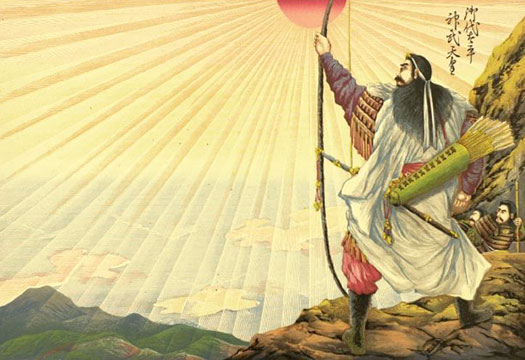
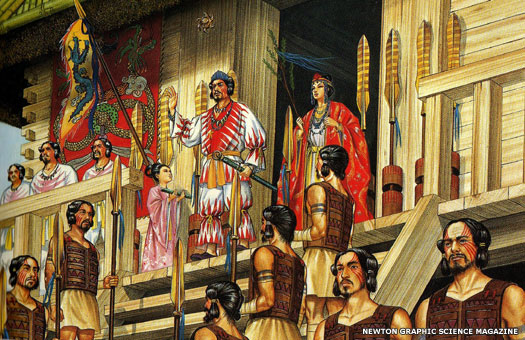
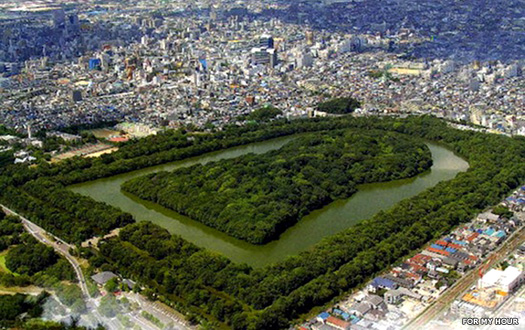
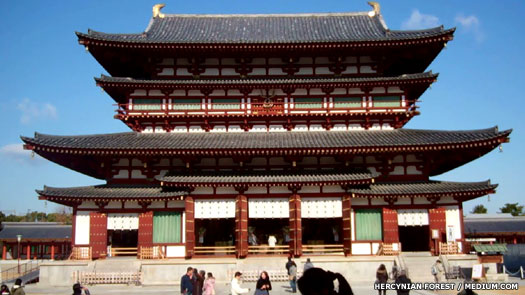
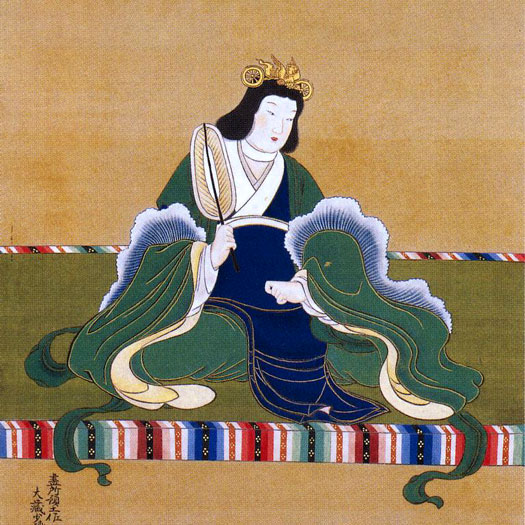

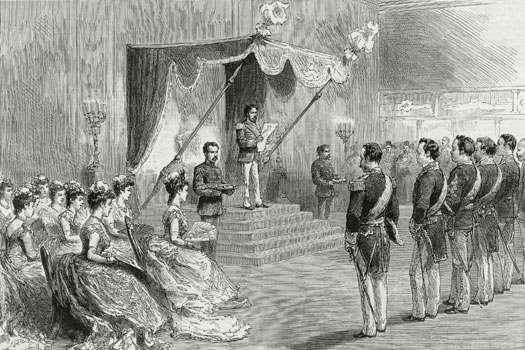


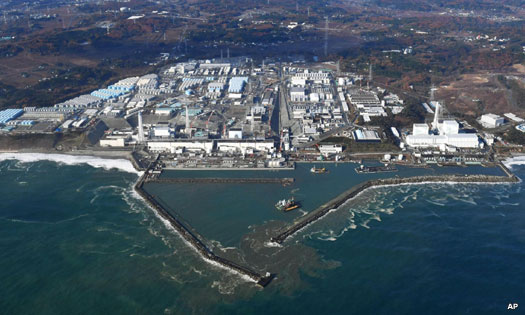
Comments
Post a Comment